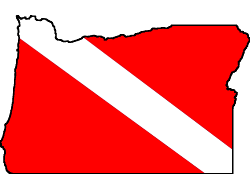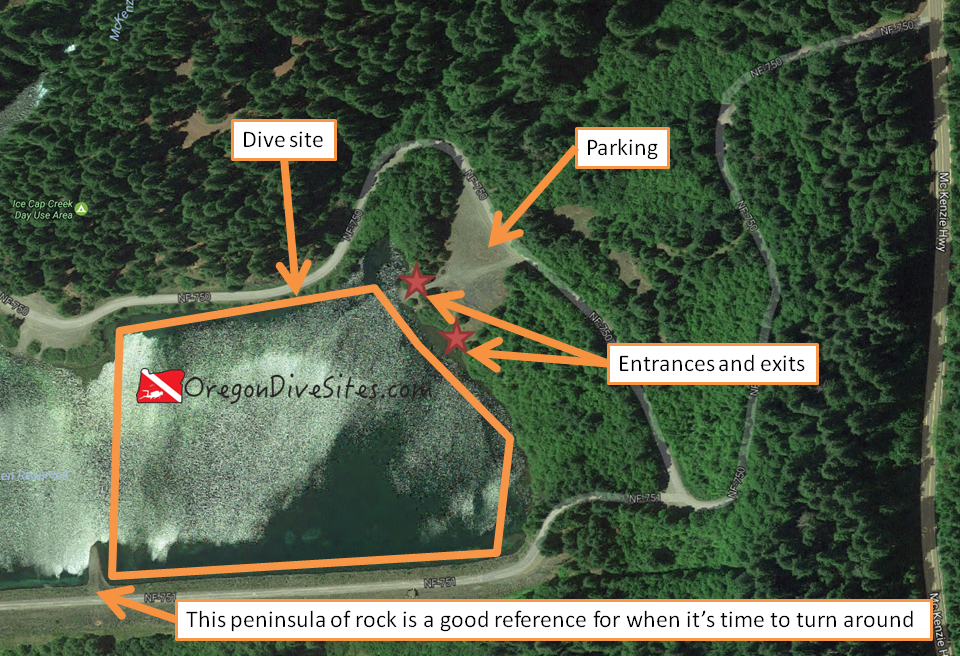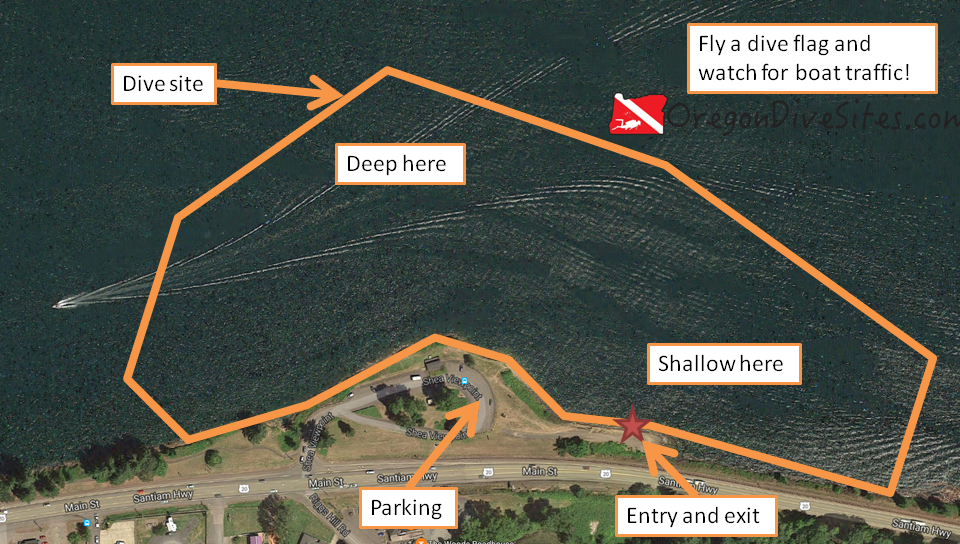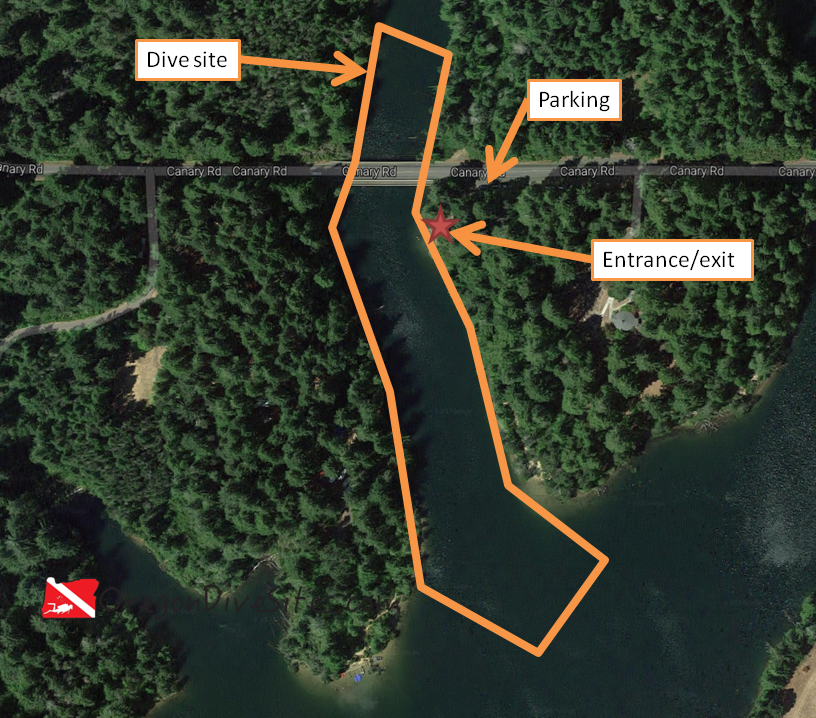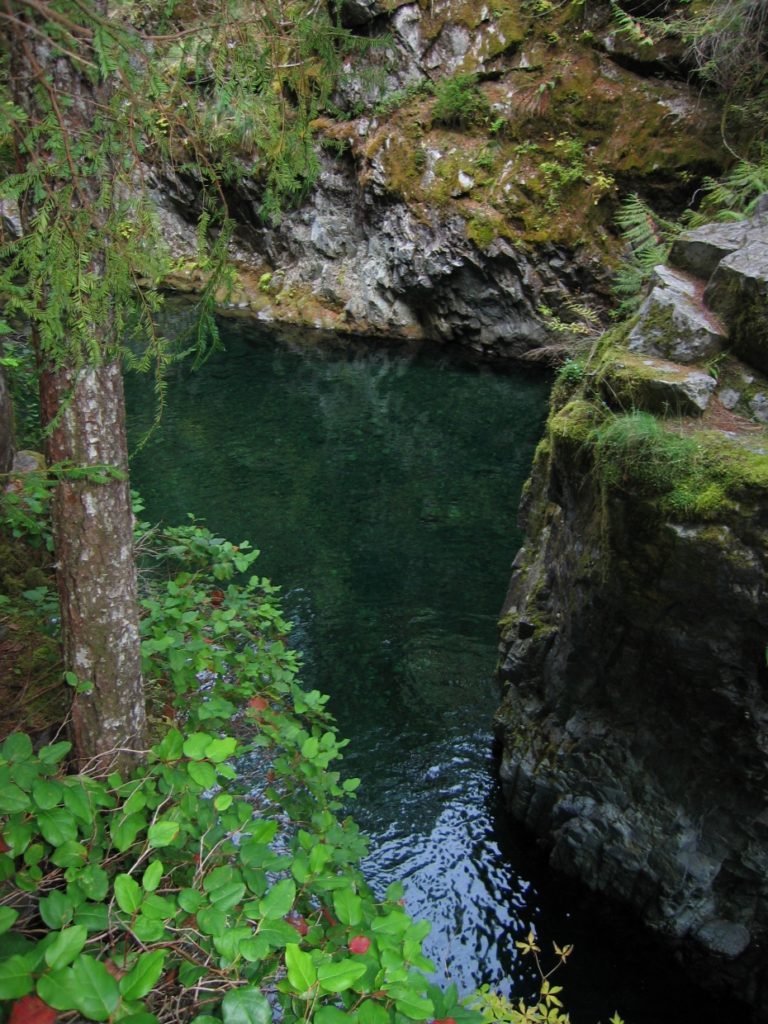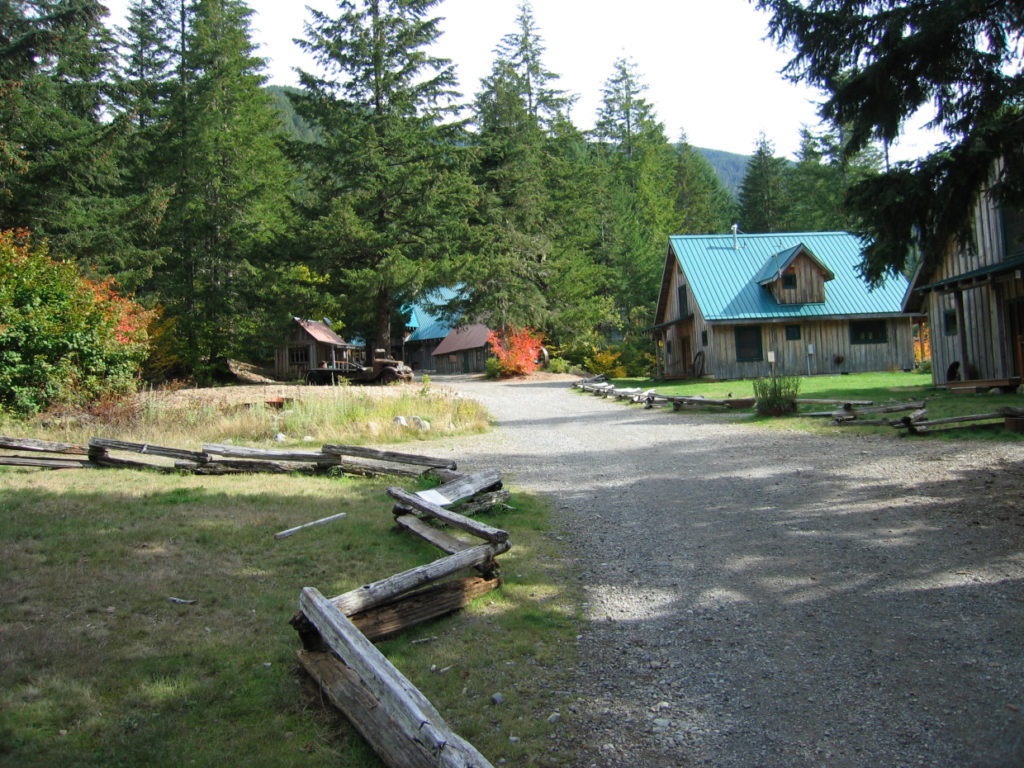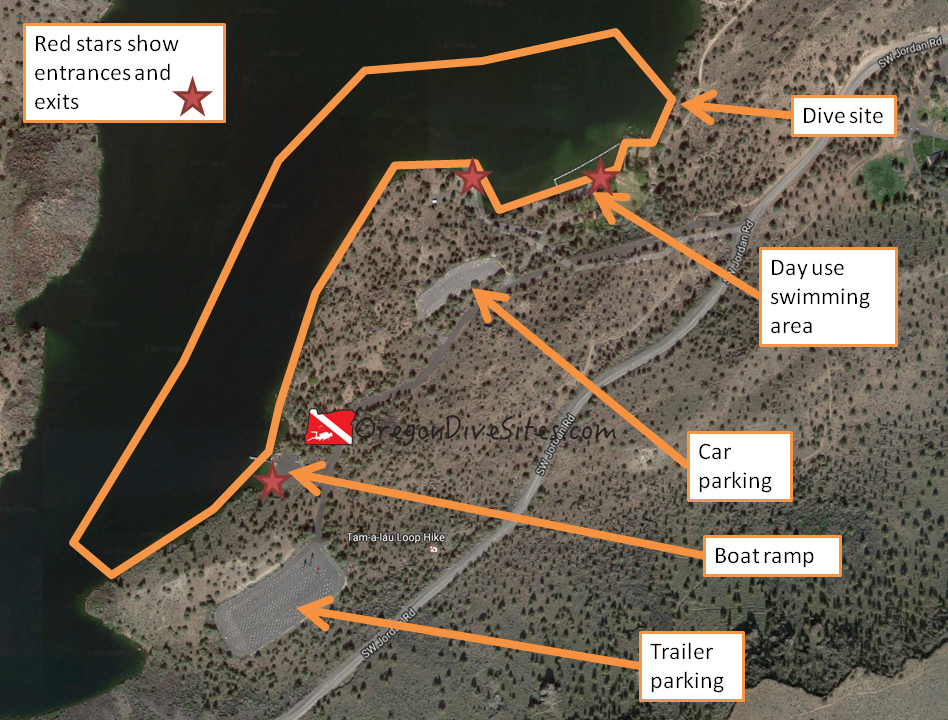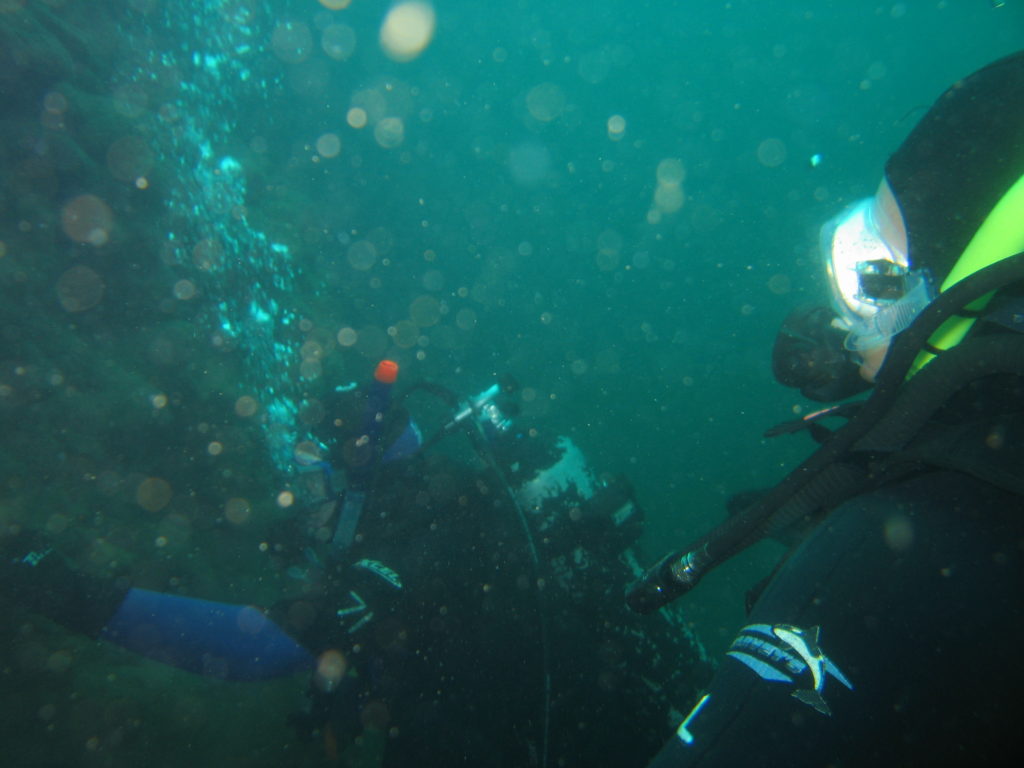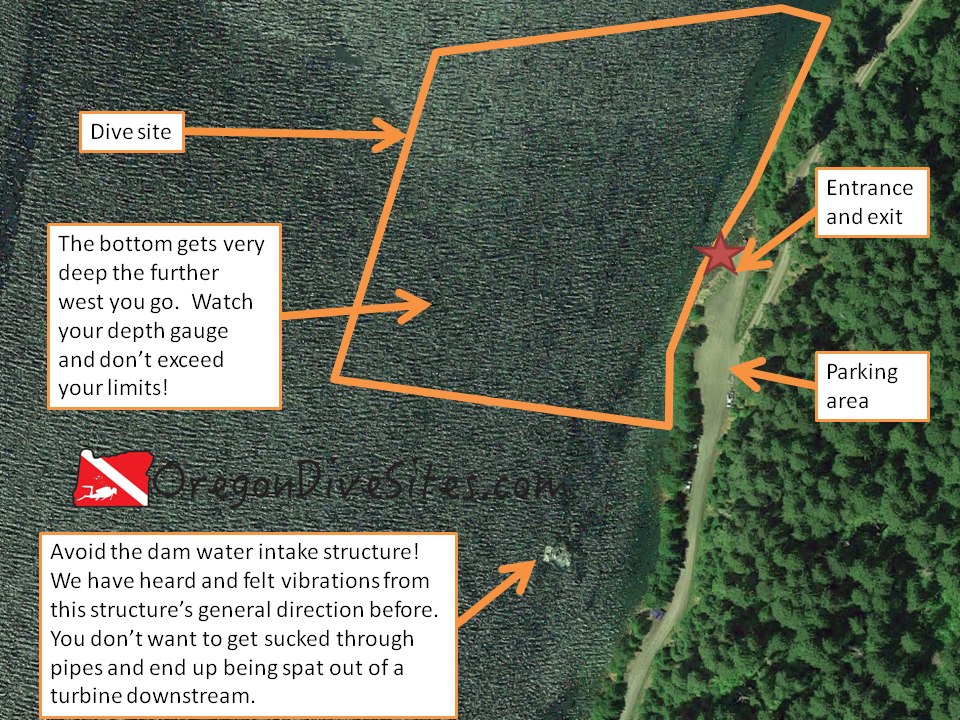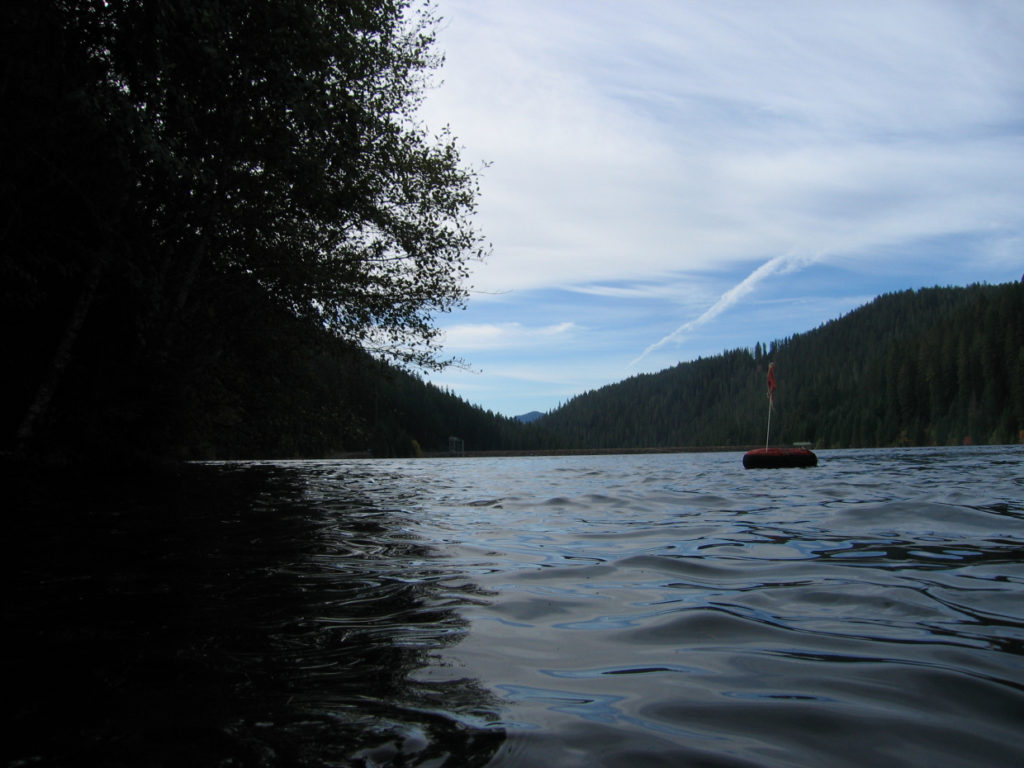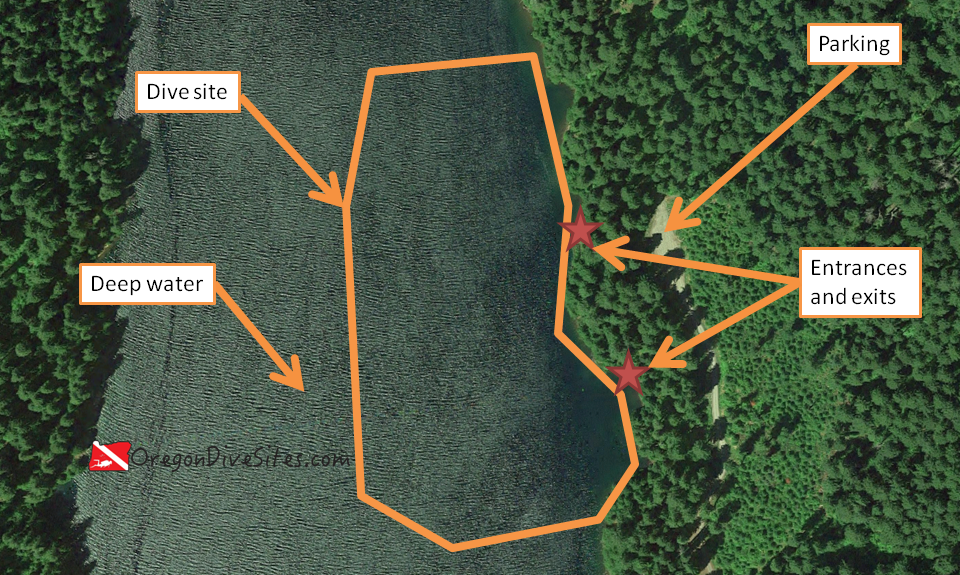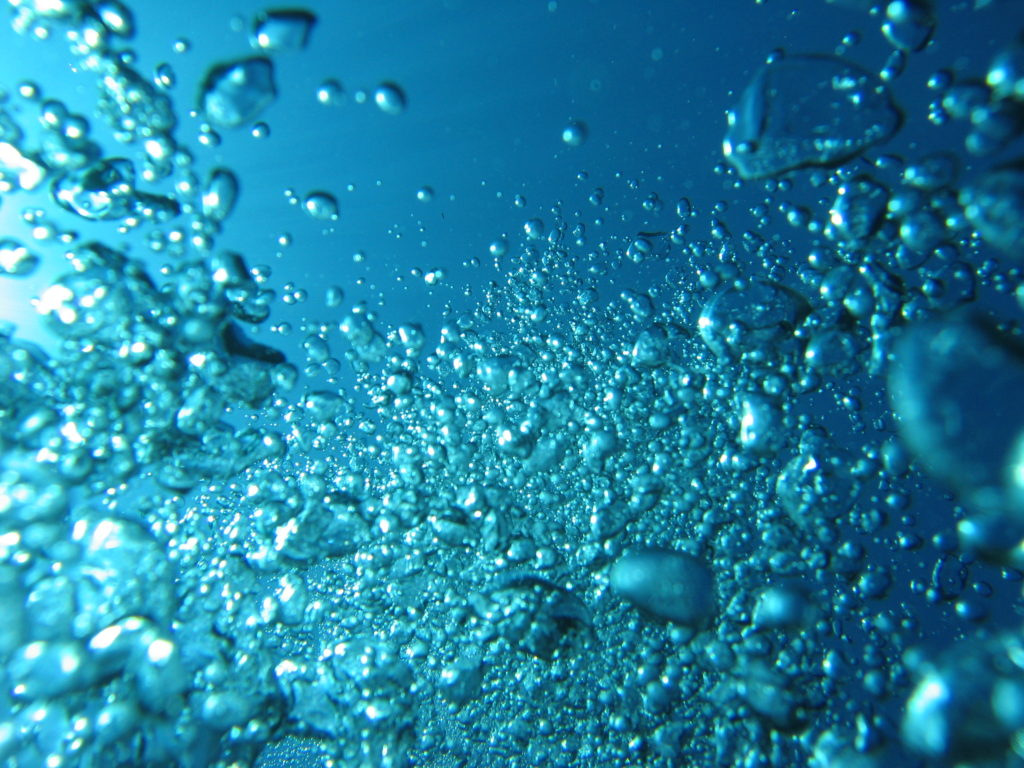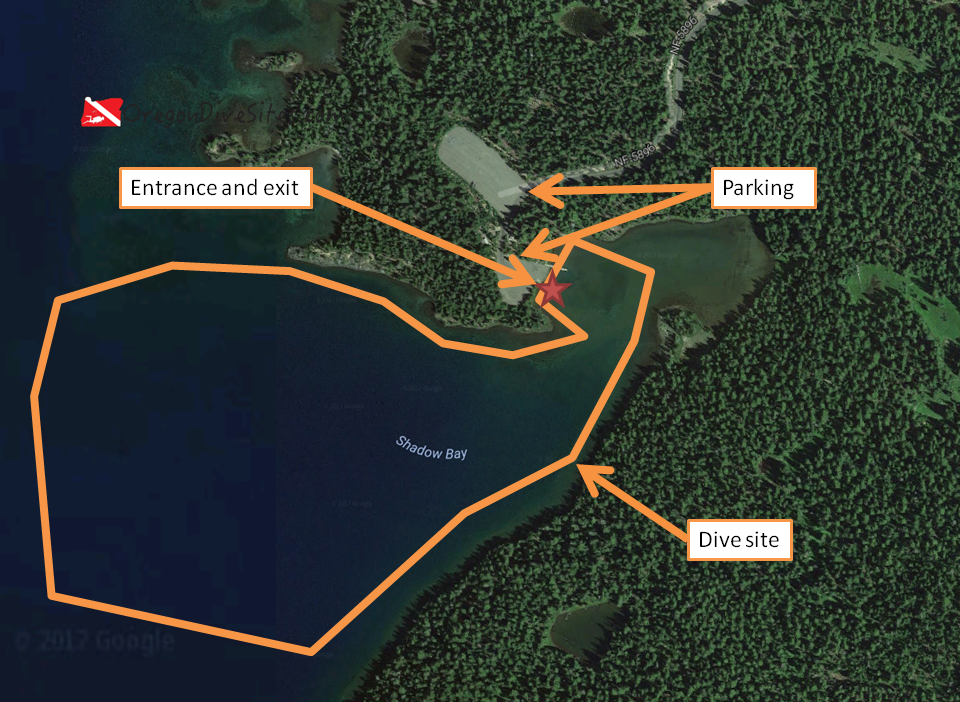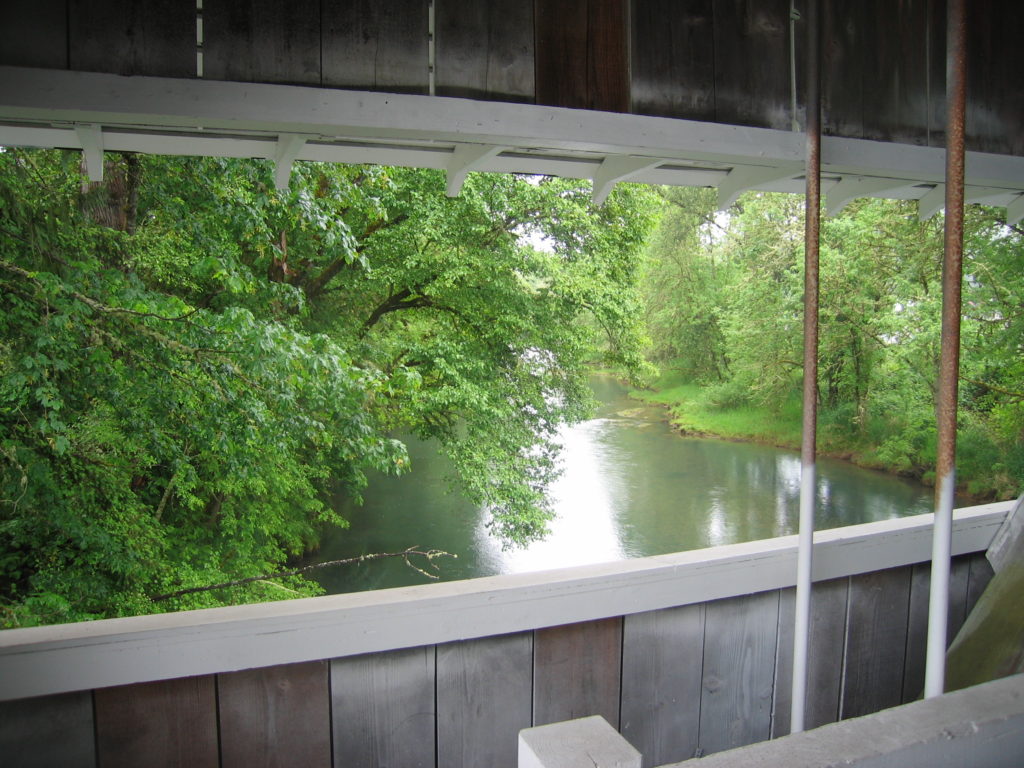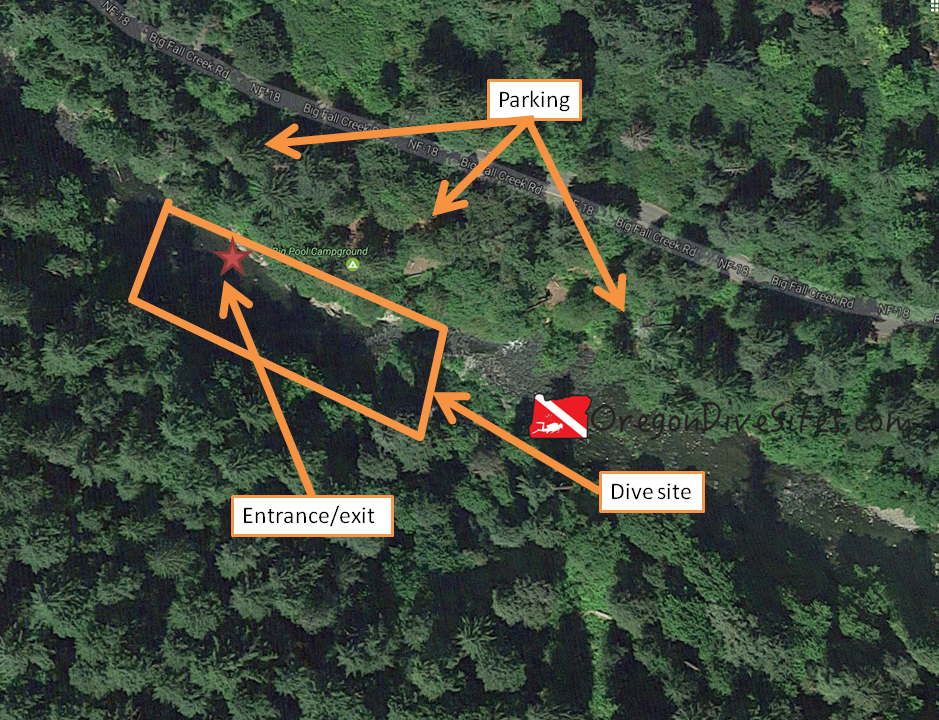The Ice Cap Creek Day Use Area at Carmen Reservoir is a fun place to play around in a submerged creek bed to practice your drift diving skills. Since this is an altitude dive, it’s a good place to practice using the altitude dive tables. The water is usually quite cold but not as cold (usually) as Clear Lake can be at the bottom of Clear Lake’s underwater springs.
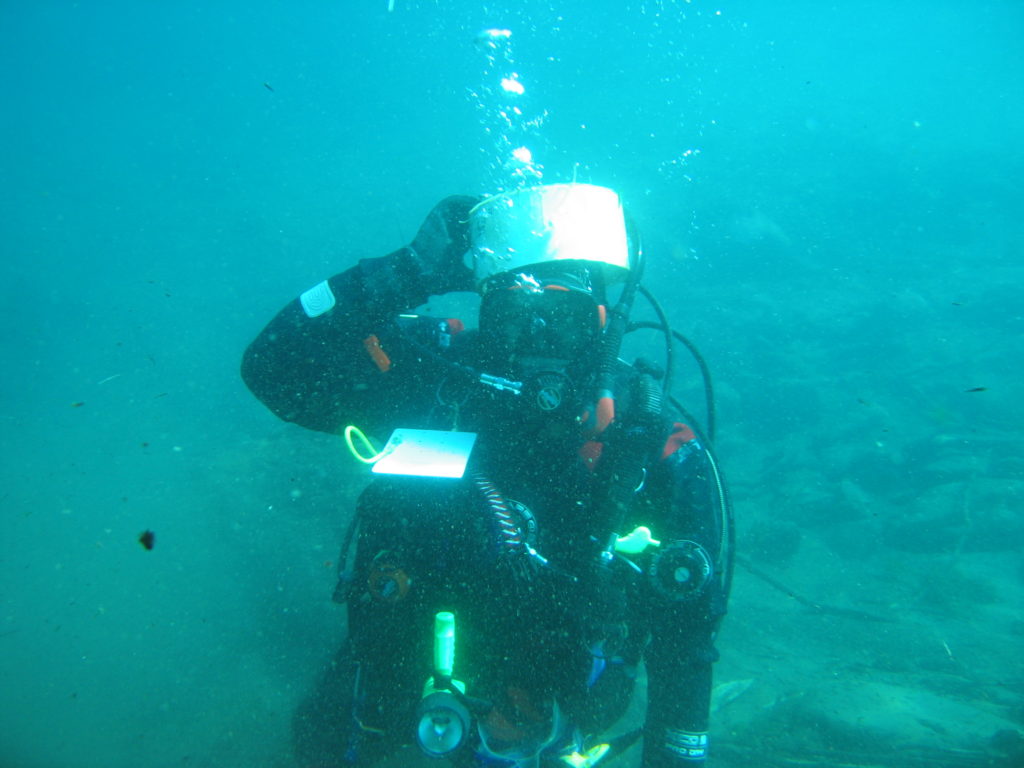
Site Highlights:
There are a couple reasons that SCUBA folks like diving the Ice Cap Creek Day Use Area. The site has very easy access to get into and out of the water. You can practice drift diving in the submerged riverbed. The site is mostly easy to dive making it accessible to even freshly certified open water divers, assuming you have proper altitude diver training. In short: this is a good site to play around at and practice your skills. You might also discover some old pots and pans, logging equipment, and other odds and ends tossed into the reservoir.
Nearest Town:
This dive site is pretty remote. There are very limited services at the resort at Clear Lake. Otherwise slightly bigger towns within an hour drive are Detroit, Rainbow, and Sisters. Bigger towns with services are Eugene, Salem, and Bend although they are all more than an hour away.
GPS Coordinates:
Special Directions to Site:
The forest road NF-750 gives access to the Ice Cap Creek Day Use Area. The road is a mile and a half or so south (down river) from the bottom of Clear Lake. Watch carefully for the signs because it is easy to miss the turn.
Parking:
The last time we were here, there was ample free parking and several locations. Double check when you arrive to make sure that the parking is still free. It’s possible the National Forest might turn this into a fee pay site.
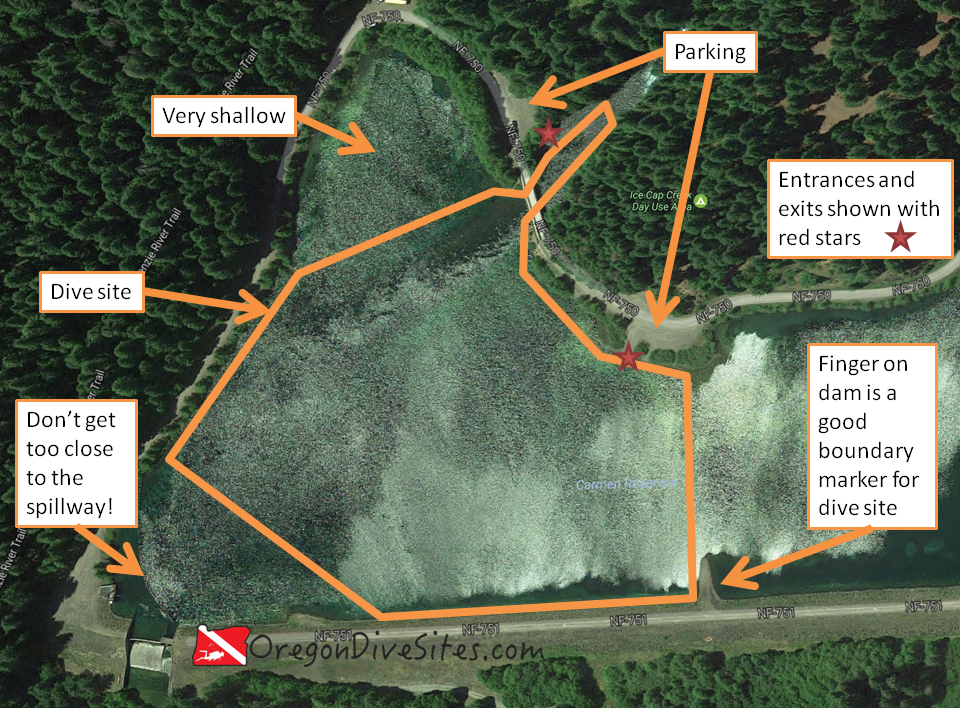
The Ice Cap Creek Day Use Area at Carmen Reservoir is a good place to do some high altitude diving in Oregon. The river coming into the reservoir can be fun to explore.
Site Orientation:
The site is roughly oriented to the cardinal directions (north-south-east-west). The Ice Cap Creek Day Use Area is at the north end of the site and with the McKenzie River’s sunken channel coming in at the top end of the dive site. The river channel runs from the northeast to the southwest where it terminates at the dam’s spillway. Don’t get too close to the spillway structure! You don’t want to end up downriver of the dam or getting sucked into the water intake. You can swim up the river channel under the bridge quite a ways. This makes for a good spot to practice drift diving.
On the east side of the site, we usually use the finger-like jetty structure on the dam to the south and the parking area to the north as our site boundary. Further to the east is the other dive site at Carmen Reservoir.
On the northwest side of the dive site, the water gets very shallow. We don’t think there’s much reason to explore that area.
Entrances and Exits:
The two easiest entrances/exits are at the parking areas. There is a bit of a scramble step or two to get down to the water but it isn’t too bad.
Salt/Fresh:
This is a fresh water dive.
Shore/Boat:
This is a shore dive.
Normal Conditions:
Normally the water is cold and clear. There is always a current around the sunken river channel. Boats can occasionally be in the lake so it’s a good idea to fly a dive flag. Note that this is an altitude dive.
Normal Visibility:
Usually visibility is quite good since the majority of the water is coming almost directly out of Clear Lake. Expect 20-40 feet of viz depending on how much surface runoff is coming into the lake. Close to the Ice Cap Creek Day Use Area you can run into silt on the bottom that can be stirred up but as long as you’re near the sunken river channel, any silt that is stirred up clears quickly.
Normal Temperature:
We’ve seen water temperatures in the river channel as cold as 38F and temps away from the channel near the surface as high as 60F depending on the time of the year.
Best Time of Year:
This site is best in the summer and fall. Once the snow melts enough for the road to open in the spring, the water is usually very cold. In the winter, you can’t get to the lake because of the snow.
Max Depth:
We once found 60 feet near the dam in the old river channel but most of the site is more in the 20-40 foot range.
Suggested Special Training:
This is an altitude site where you should have altitude diver training. Open water divers can successfully dive this site as long as you stay away from the dam intake structure. This is a great place to practice your dive skills and do training.
Difficulty of Dive:
We think this is a pretty easy dive for the most part so we rate it as a beginner skill level site.
Distance of Walk to Entrance:
Unless there are a lot of people parked at the parking areas, you shouldn’t have to walk more than 50 feet.
Surface Swim Length:
No surface swim is needed.
Special Site Notes:
Because of how cold the water here can be, you should make sure your equipment is rated for cold water. We have had a regulator free flow up at Clear Lake just up the river. Be sure to remember your training in case you have that situation happen to you.
The dam intake structure can suck you in, chew you up, kill you very dead, and leave a hefty bill for your next of kin to recover your sliced and diced body. Steer clear of it!
Closest Local Dive Shops to Get Air Fills and SCUBA Gear:
The closest dive shops are located in Bend, Salem, and Eugene. Each is quite a ways away (1.5+ hours) so you need to be self-sufficient at the Ice Cap Creek Day Use Area.
Nearby Restaurants We Like:
The closest food is up at Clear Lake’s resort where very limited food service is available. Otherwise, in Detroit, Camp Sherman, and Rainbow (all towns within an hour of the site) you can find a few restaurants.
Nearby Places to Camp and Diver-Friendly Hotels:
If you want to sleep in a cabin, the resort at Clear Lake does rent cabins to divers. Be sure to ask when you make your reservation about how you can store your gear. Otherwise, there are plenty of National Forest campgrounds and lots of primitive camping in the forest.
What Other People Have to Say About This Site:
Please write in the comments below your experiences with this dive site!
